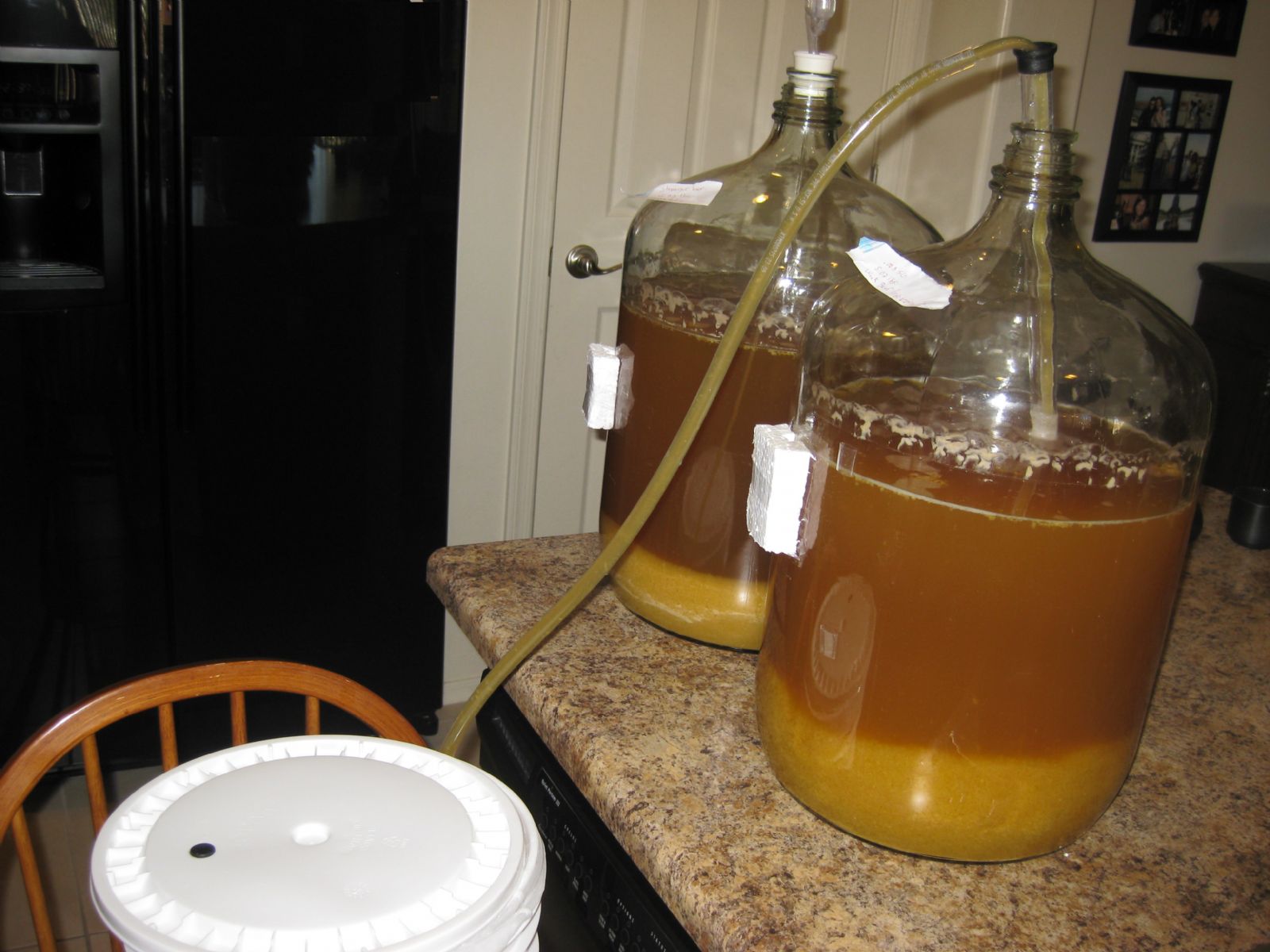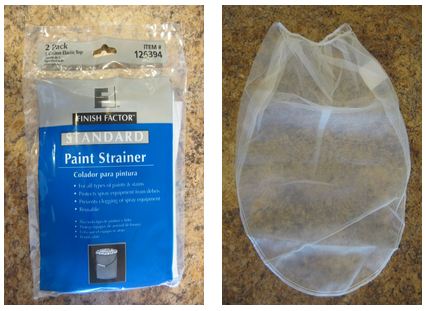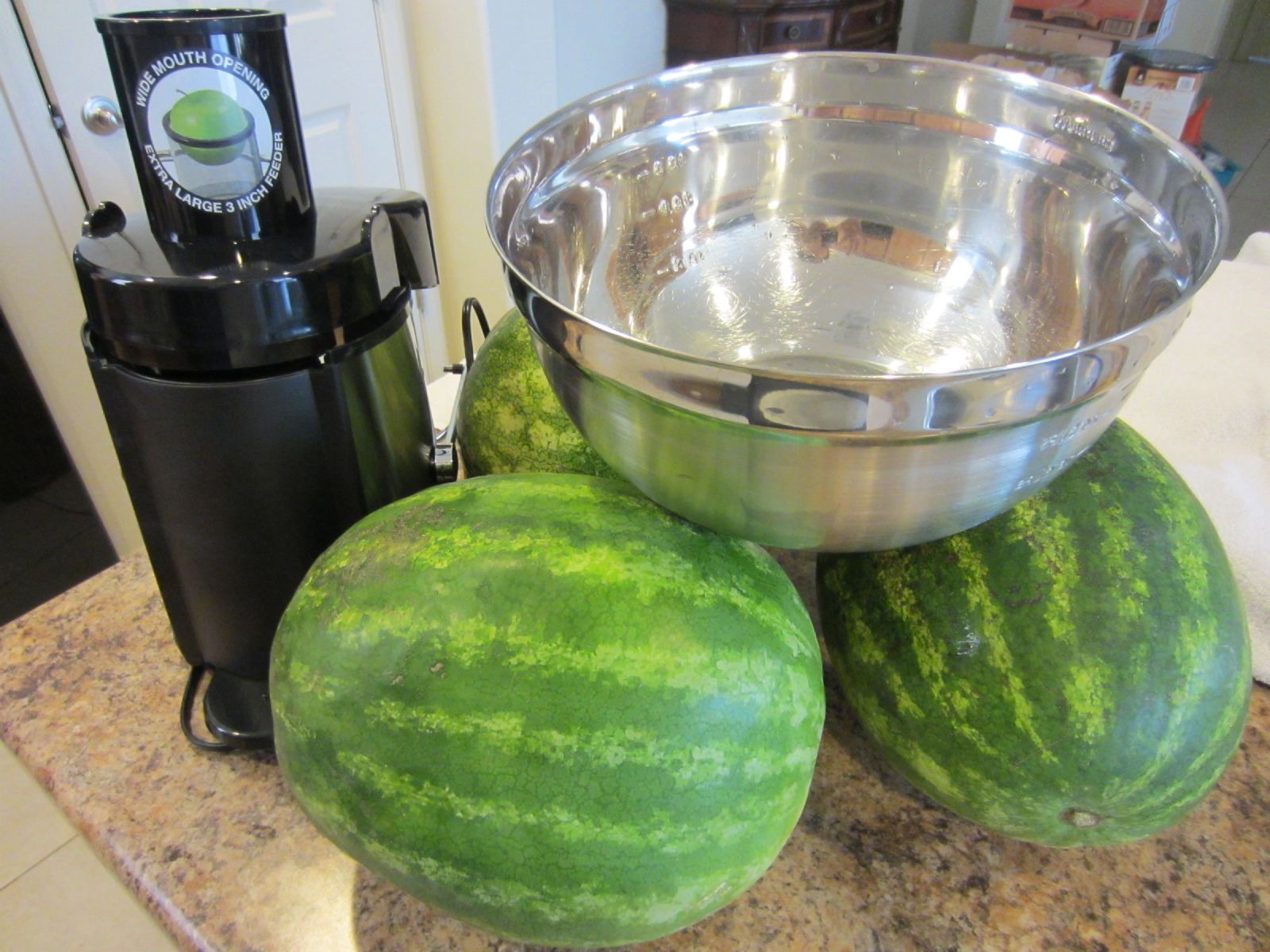Tips on Brewing Fruit Beer
By DANIEL J. LEONARD

Done well, fruit beer can be some of the most delicious beer out there, but therein lies the problem: it's not often done very well. To be fair, making an incredible fruit beer is one of the toughest challenges any brewer can face. Not only do you have the increased cost of adding fruit in a cost competitive market, a fact that alone prevents many commercial brewers from taking a stab at brewing the style in the first place, but you also have the stigma of a not too distant history of commercial brewers simply adding fruit to a less than average batch of beer in a sneaky attempt to mask the flaws of the underlying beer. The bottom line with fruit beer, or any other style of beer for that matter, is that adding something to a crap beer doesn't change the fact that you brewed a crap beer. Which brings us to our first tip:
1. A Quality Fruit Beer Starts with a Quality Base Beer. On the whole, fruit beer is predominantly brewed using a wheat beer base recipe, though fruit has found it's way into nearly all styles of beer. Master your base beer recipe, and only then enhance it with fruit.
2. Use Only Quality Fruit: Remember the two most important components of fruit beer: the fruit and the beer. Once you've got a solid base beer recipe, don't go and ruin it by adding sub-standard fruit to it. Obtaining superior fruit will probably require you to study up on when the fruit you want to use is in season and how to go about selecting the ripest, most flavorful fruit. In other words, it's not good enough to be merely a brew master, you're also going to have to add fruit expert to your resume.
3. Balance is Key: This tip is by far the most difficult to master and is a skill that takes time to develop. You may have noticed after sampling a large variety of commercial fruit beer, you tend to run into the Goldilocks scenario: The fruit beer is either too sweet, too dry, but rarely is it just right. At the homebrew level, you will most likely end up with a dry fruit beer, at least in the taste, which is often a let down because after all the effort of brewing a quality base beer and selecting the choicest fruit, your beer lacks the desired fruit flavor. When making a fruit beer and wanting to avoid a super dry tasting beer, consider choosing a less attenuative yeast. This could be an English Ale yeast which tend to contribute a certain fruitiness to the beer anyways, or possibly an American Hefeweizen yeast. Preventing your fruit beer from becoming too dry and losing its sweet fruity character is a very frustrating albeit common problem, a problem that is easily deserving of an article of its own... Yes, of course we got you covered (when you're ready):
How to Brew Fruit Beer: The Case of the Dissappearing Fruit
4. Plan Ahead: On a logistical note, if you’re planning on using some special ingredient (like mango extract for example) that can’t be found locally and needs to be shipped, make sure you plan accordingly so that it arrives at least on time for bottling day.
5. Release the Beast: Some brewers recommend freezing your fruit before using it in order to add more fruit flavor to your brew. The thinking is that when you freeze fruit, the water crystals inside the fruit cells rupture thereby releasing more fruit flavor.
6. The Golden Ratios: When making a fruit beer, make sure to use the approximate ratio of fruit needed for that particular fruit. Knowing the approximate ratio up front will help avoid needing to add more fruit later, re-fermenting, and extending your fermentation time by up to several weeks. Below is a general reference for how much fruit to add per gallon of beer:
Cherry: 2.00 lb./gal.
Strawberry: 1.80 lb./gal.
Mango: 1.60 lb./gal.
Watermelon: 1.6 lb./gal.
Raspberry: 1.32 lb./gal.
Blackberry: 1.00 lb./gal.
Maraschino Cherries: 1.00 lb./gal.
Passion Fruit: 0.80 lb./gal.
7. I've Got My Fruit, Now What?: You have a few choices when it comes to the way you add real fruit to your beer: juicing the fruit, pureeing fruit, or slicing whole fruit and adding the pieces to the fermentor. Let's take a closer look at some of the pros and cons of each of these approaches.
Juicing: For my money, juicing is the way to go. The pros are that you maximize fruit juice extraction meaning you don't have to buy as much fruit and you get more flavor. The drawback to juicing is that if you don't already have a juicer, you're going to be looking at throwing down some cash for a decent one. Also, slicing whole fruit up takes less time than juicing, but slicing fruit and adding it to the fermentor means that when it comes time to bottle or keg your beer, you're going to have to fish that whole fruit out and you'll lose whatever beer the fruit pieces have absorbed. With juicing, the fruit juice gets blended directly into the beer so you don't have to worry about that. Not to mention, if you're fermenting your beer in a carboy, adding juice is much easier than stuffing whole pieces of fruit through the mouth of the fermentor.
Pureeing: Pureeing fruit is probably the most time consuming and problematic method when wanting to add real fruit to beer, and I'd only recommend making your own puree if juicing is not an option and you just have your little heart set on using a puree but you can't buy the type of fruit puree that you're looking for.
The first step in making a puree is cutting the fruit, which, if you were just adding whole fruit to your beer, you'd be done by now. Next, you have to blend the fruit up (i.e. puree it) and then decide whether or not you want to mimic a commercial puree like those you'd find at a homebrew store which contain approximately 10% table sugar. Allow me to solve this dilemma for you: Don't add the sugar. Why not? Aside from having to do some annoying algebra to figure out how much sugar to add, the table sugar you'd be adding is just going to get fermented out by the yeast anyways, so the only possible benefit you'd get by adding extra sugar is a slightly higher final alcohol content.

Furthermore, some brewers recommend heating the puree in order to sterilize any unwanted bacteria that might have set up camp while you preparing the puree. If you go that route, I would advise against boiling the puree because you will almost certainly change its fruit character for the worse, turning the puree bland or, depending on the fruit, just plain nasty. Not to mention, you will cause the puree to gel, which is great if you’re making jam, but bad if you’re trying to make a relatively clear beer. If you’re the nervous type and scurred of a possible infection, you can heat the puree to no more than 150 F for 10- 15 minutes.
Another downside to pureeing is that when it comes time to rack the beer off of the puree, not only is it difficult to avoid the puree from getting sucked into your siphon, but you also lose a fair amount of beer that the puree sitting at the bottom of your fermentor has absorbed (see below).

In order to avoid this, you could pour you puree into a paint strainer bag (see below) before adding it to the fermentor assuming you're not fermenting in a carboy. You should be able to pick up a 5 gallon paint strainer at most home improvement stores. By the way, these paint strainer bags also work great from doing an all grain brew-in-a-bag, but I digress.

If you're stuck with fermenting in a carboy, you can try wrapping a paint strainer around your auto siphon, as you can kind of see in the photo below, in order to minimize sucking up clumpy fruit pulp. Your next problem is deciding what to do with the pulpy mess left in the carboy. On its own, the pulp mess isn't too much a problem, but the pulp absorbs a good amount of your beer which would require you to either take the loss, or pour the pulp into a strainer, and squeeze the fruity beer juice out. Your call.
.jpg)
Alright, so on the plus side of using a fruit puree, you do, in theory, get more fruit extraction and potential fruit flavor as compared to using whole fruit pieces because fruit puree increases the surface area the beer and fruit have to come in contact with each other. Also, If you want to try and save a few bucks, you can make your own puree for about a quarter of the cost of purchasing a store-bought puree.
Adding Whole (Sliced) Fruit: Simply slicing up whole fruit is the easiest, less time consuming option, but you lose some of the juice you'd be able to extract by using a juicer for example, so you might need to add more fruit to make up for it. Also, if adding the fruit slices into a carboy, they can be tough to squeeze in, and tough to get out.
8. Peace Out, Pectin: For homebrewers, the pectin problem is predominately encountered when making cider or fruit beer, but is easily remedied if you know a few tricks. Pectin is an enzyme that fruits release when boiled that causes gelling and haze in fruit beer, so the less pectin in your beer, the less couldy the beer. Some fruits have higher levels of pectin in them than others, however there is a modern day solution that, for the most part, will eliminate your worries about pectin no matter the fruit. Enter pectin’s arch enemy: pectinase. Pectinase is an enzyme that can be added to your beer to break down the pectin. Most brewers who brew fruit beer will add their fruit, raw or puree, to the bottom of a secondary fermentor and then siphon the beer from the primary onto the fruit. You can choose to add a small amount of pectinase to the fruit before dumping that fruit at the bottom of the secondary, or it can be added after the fruit is done fermenting in the secondary and after you have identified how bad your pectin problem actually is. If you already know you are brewing with a fruit with high pectin levels, then it may be smart to be proactive.
From The Blog
Tips for Craft Brewery Success
The best business secrets wikileaked from the private records of the most successful craft breweries in the United States.
Beer Names You Might Be Saying Wrong
Enlighten yourself, but please don't correct others. It's just one of those Catch-69 situations, like when somebody has ketchup on their face.
The Beer Quiz
What's your beer IQ? This test measures an individual’s beer knowledge through a series of questions of varying levels of difficulty: Normal, Hard, and Insane.
Homebrewing Techniques
Beat the Stuck Fermentation Monster
You've brewed the perfect wort. You bullseyed your strike temp, you had a most excellent cold break, your OG was right on the money...
How to Cork Belgian Beer Bottles
So you wanna up your bottling game, huh? Well, you've come to the right place.
Top 40 Ways to Improve Your Homebrew
Admit it: No matter if in a DeLorean, TARDIS, or a hot tub, we’ve all thought about what advice we might give our younger selves if we could go back in time.
DIY Projects
How to Polish a Keg
Shining up your keg will probably not improve the taste of your beer, but it looks cool and inspires epic brewing sessions!
Convert a Refrigerator Into a Fermentation Chamber
Decided to take a huge step in improving your homebrew and set up a temperature controlled fermentation system, have ya? Smart thinking.
How to Convert a Keg Into a Brew Kettle
Convert that old keg into a brewing kettle. The advantages of using a keg for homebrewing pretty much come down to quality and cost.
|
|
